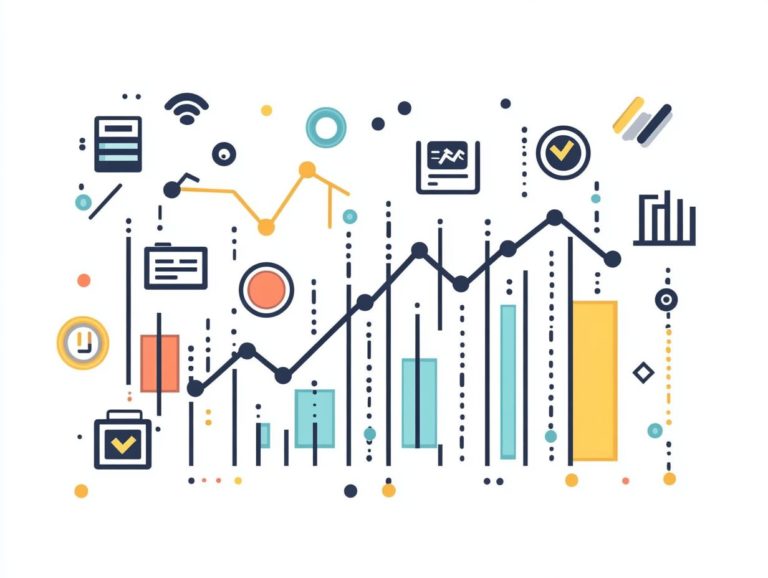Understanding Cloud Billing Models
In today s digital landscape, grasping cloud billing models is essential for you to get the best value from your cloud services. This article delves into the various types of cloud billing models like pay-as-you-go, subscription-based, and resource-based guiding you to determine which one aligns best with your unique needs.
You’ll discover the advantages these models provide, such as cost savings and flexibility, while also keeping in mind the key factors that should influence your decision-making.
Let s dive into the exciting world of cloud billing together!
Contents
Key Takeaways:
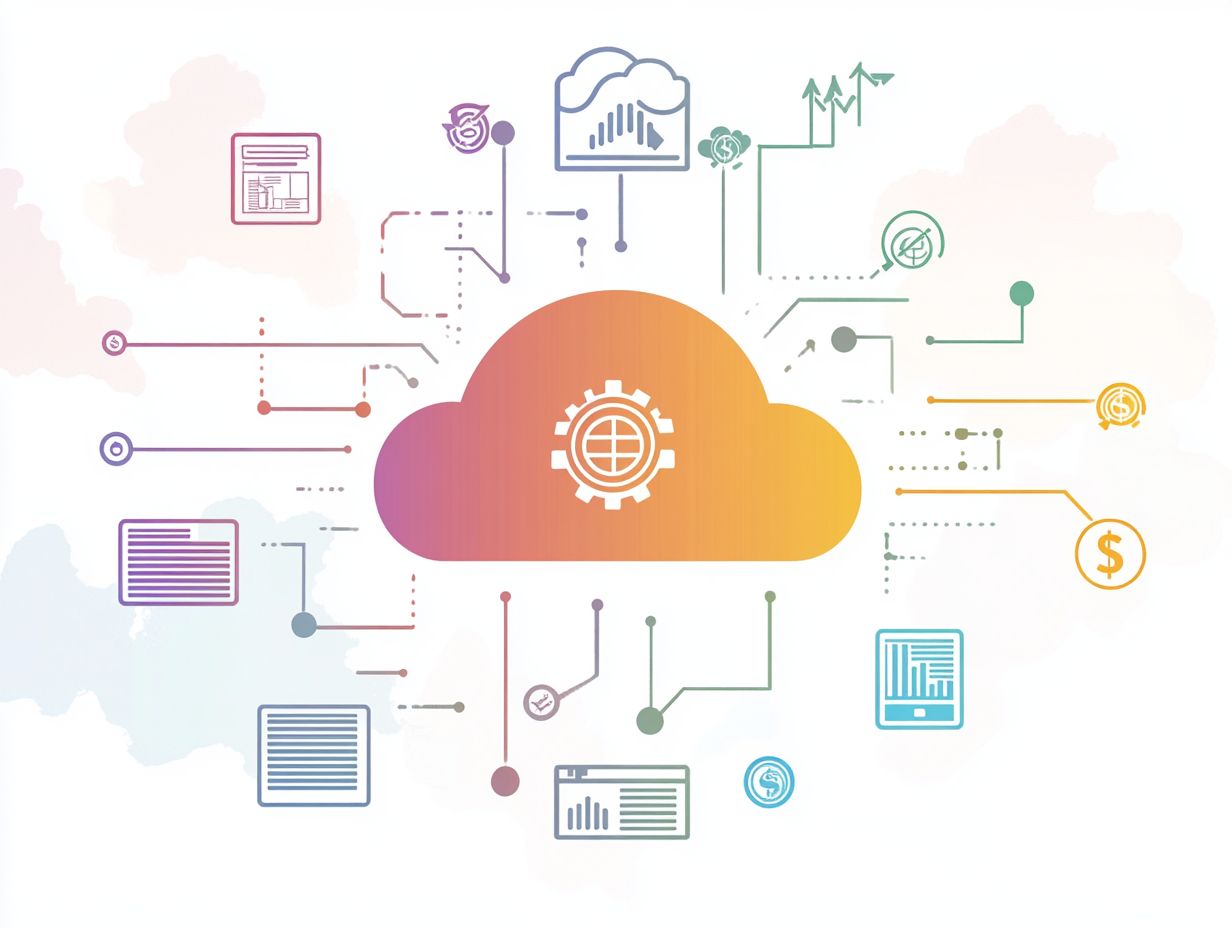
- Cloud billing models include: pay-as-you-go, subscription-based, and resource-based.
- Benefits: cost savings, flexibility, and scalability.
What is Cloud Billing?
Cloud Billing is a vital aspect of Google Cloud, crafted to offer you detailed insights into usage costs and resource management across a range of cloud services.
By enabling you to track spending and optimize costs, Cloud Billing allows for efficient management of your cloud resources while providing essential budgeting tools, billing reports, and usage forecasts.
This system helps you clearly understand cost trends and implement effective budgeting alerts. With seamless integration with services like BigQuery export, you can enhance your data analysis, granting you greater control over your cloud expenses.
Beyond these robust features, the platform supports multiple payment methods, giving you flexibility in how you settle your accounts.
You can also connect with Identity and Access Management (IAM) roles that control who can access billing information, ensuring that billing access is tailored to your organizational needs.
You can organize billing data easily, from projects to folders, allowing for a clearer visualization of your expenses.
By leveraging these powerful tools, you can make informed decisions that drive cost efficiency and optimize resource allocation, ultimately enhancing financial management within your cloud landscape.
Types of Cloud Billing Models
Understanding the various cloud storage pricing models is essential for organizations aiming to optimize their spending on cloud resources and manage costs with precision.
Each model presents distinct advantages and caters to different usage patterns, enabling you to choose the most suitable approach for your specific needs while ensuring effective resource management.
The Cloud Billing models include:
- Pay-as-you-go
- Subscription-based
- Resource-based billing
Each model is crafted to meet diverse business requirements and financial strategies.
Pay-as-you-go
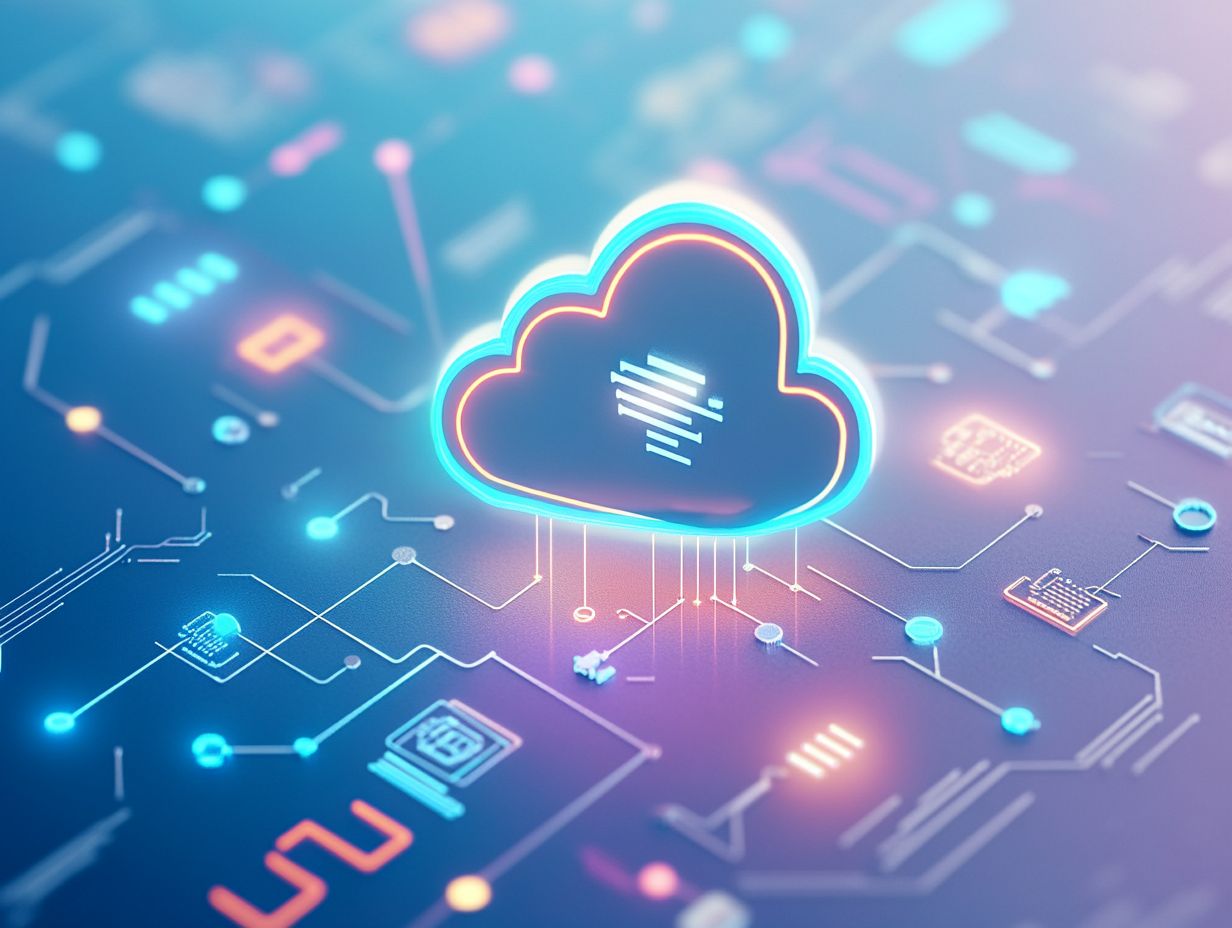
The Pay-as-you-go model is a flexible Cloud Billing option that allows you to pay only for the cloud resources you consume, offering a cost-effective solution tailored to your specific usage patterns. This approach enables you to scale your operations seamlessly without incurring unnecessary expenses, making it ideal for variable workloads.
Cloud vendors deliver detailed billing reports, enabling you to track usage costs and optimize them effectively. You can use forecasts and automated controls for insights into your spending, ultimately enhancing your budgeting strategies.
This model is adaptable, but it can also lead to unpredictable costs if not monitored closely, complicating your long-term financial planning.
Therefore, it’s essential for you to strike a balance between capitalizing on flexible resource management and implementing robust tracking systems to avoid budget overruns. Adapting to this dynamic structure can lead to significant savings, but it requires your diligent oversight to ensure your financial goals are met without sacrificing operational efficiency.
Start exploring these models today to maximize your cloud benefits!
Subscription-based
The subscription-based billing model allows you to easily manage your cloud spending. You pay a fixed amount for a defined period, often with committed use discounts that lead to considerable savings.
This model is especially beneficial for businesses with stable resource demands. It helps you budget and allocate resources effectively over time.
Subscription services give you flexibility. You can adjust cloud resources as your needs change, avoiding unexpected costs.
This model improves your ability to forecast expenses accurately. Centralized billing contacts make managing payments easier, boosting financial oversight.
By adopting this payment structure, you create a stable cloud environment and support informed decision-making for future investments.
Resource-based
The resource-based billing model helps you pay for specific cloud resources based on usage. This allows for meticulous cost management for projects that need precise resource allocation.
It’s great for businesses with varying workloads. It helps track both direct and indirect costs tied to various cloud services.
This model reshapes how you categorize resources. You get a clearer view of the operational costs linked to specific project needs.
By distinguishing between essential and non-essential resources, you can make better project management decisions. This clarity also helps you find cost-saving opportunities.
Valuing resources ensures that every dollar spent adds real value. This approach enables teams to boost efficiency and keep projects within budget, positively impacting profitability.
Benefits of Cloud Billing Models
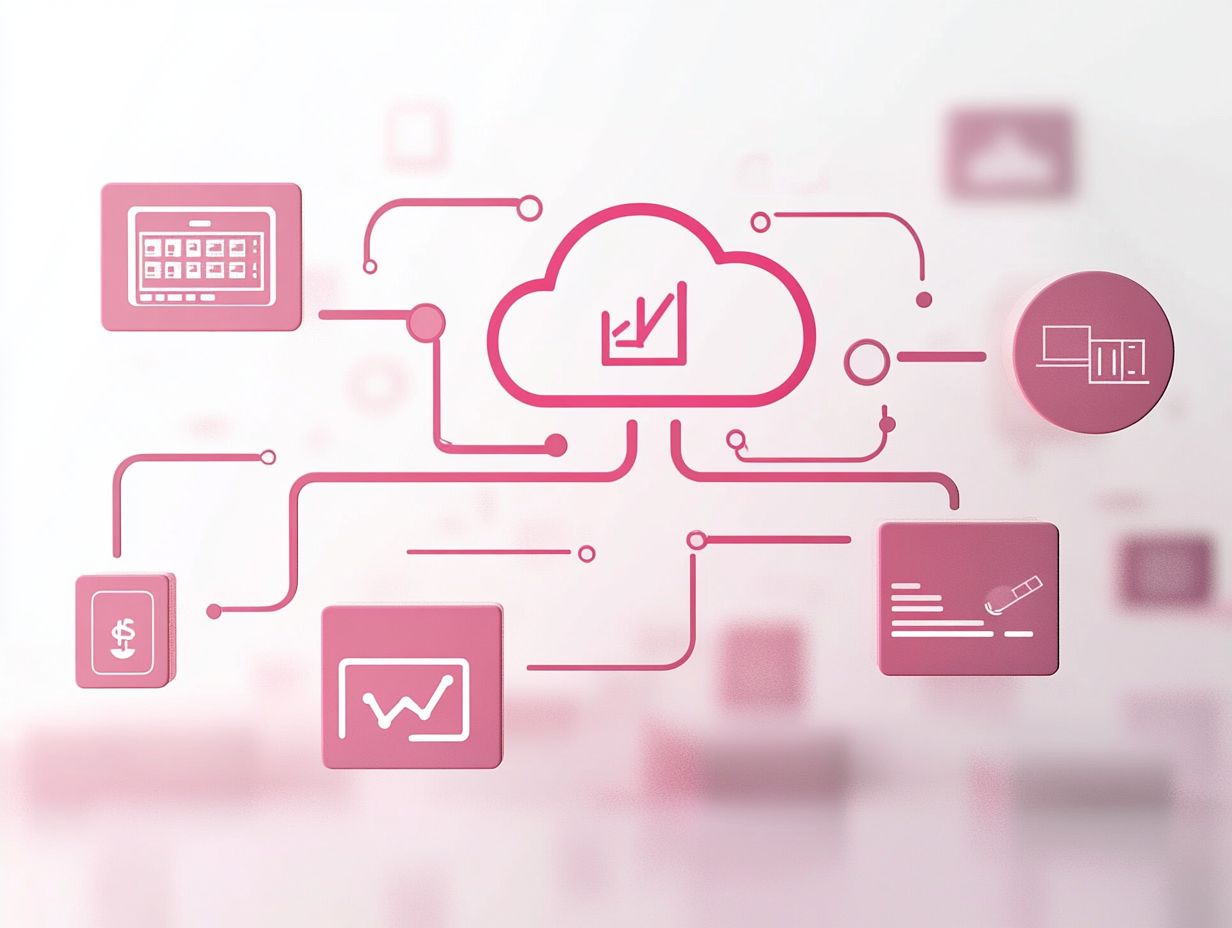
The advantages of various cloud billing models are substantial. For a deeper insight, understanding the billing cycle in cloud services can help you realize significant cost savings, flexibility, and scalability that match your cloud usage patterns.
With features like automated cost controls, budget alerts, and detailed billing reports, managing cloud expenses becomes efficient. Take control of your spending!
You can use advanced tools like BigQuery export for thorough cost analysis. This enables you to make informed financial decisions while optimizing resource use.
Cost Savings
Cost savings are one of the most compelling benefits of smart cloud billing models! By leveraging committed use discounts and tailored cost management strategies, you can lower operational costs and gain financial control.
This approach boosts cloud efficiency and enhances your long-term budgeting. To realize these savings, consider these strategies:
- Rightsizing instances to suit your workload requirements
- Utilizing serverless architectures (running applications without managing servers)
- Automating scaling policies
For example, a major retail company optimized its cloud expenses by switching from traditional virtual machines to a serverless model during peak seasons, resulting in significant cost reductions.
Incorporating cloud cost management tools gives you real-time insights into spending patterns. You can adjust resources proactively and avoid unnecessary charges.
By adopting these strategies, you manage your cloud resources effectively while laying a solid foundation for future savings.
Flexibility and Scalability
Flexibility and scalability are key advantages of Cloud Billing models. They enable you to tailor your cloud resource consumption to the changing demands of your business without incurring unnecessary costs.
Whether you choose a Pay-as-you-go or Subscription-based model, you can effectively manage your cloud services as your operations scale up or down.
This adaptability makes it easy to manage your resources effectively, optimizing both cloud consumption and overall operational efficiency.
Such strategic management becomes essential when managing different projects, where varying workloads often dictate the need for fluctuating resource allocation.
By harnessing the diverse billing models offered by cloud vendors, you can establish a resource hierarchy that prioritizes critical tasks while minimizing waste. For instance, employing a reserved instance for predictable workloads, paired with on-demand instances for those sporadic bursts of activity, allows you to maintain control over your budget.
This smooth transition between models nurtures economic sustainability and enhances the agility needed to confront market challenges with confidence.
Considerations al elegir un modelo de facturaci n en la nube
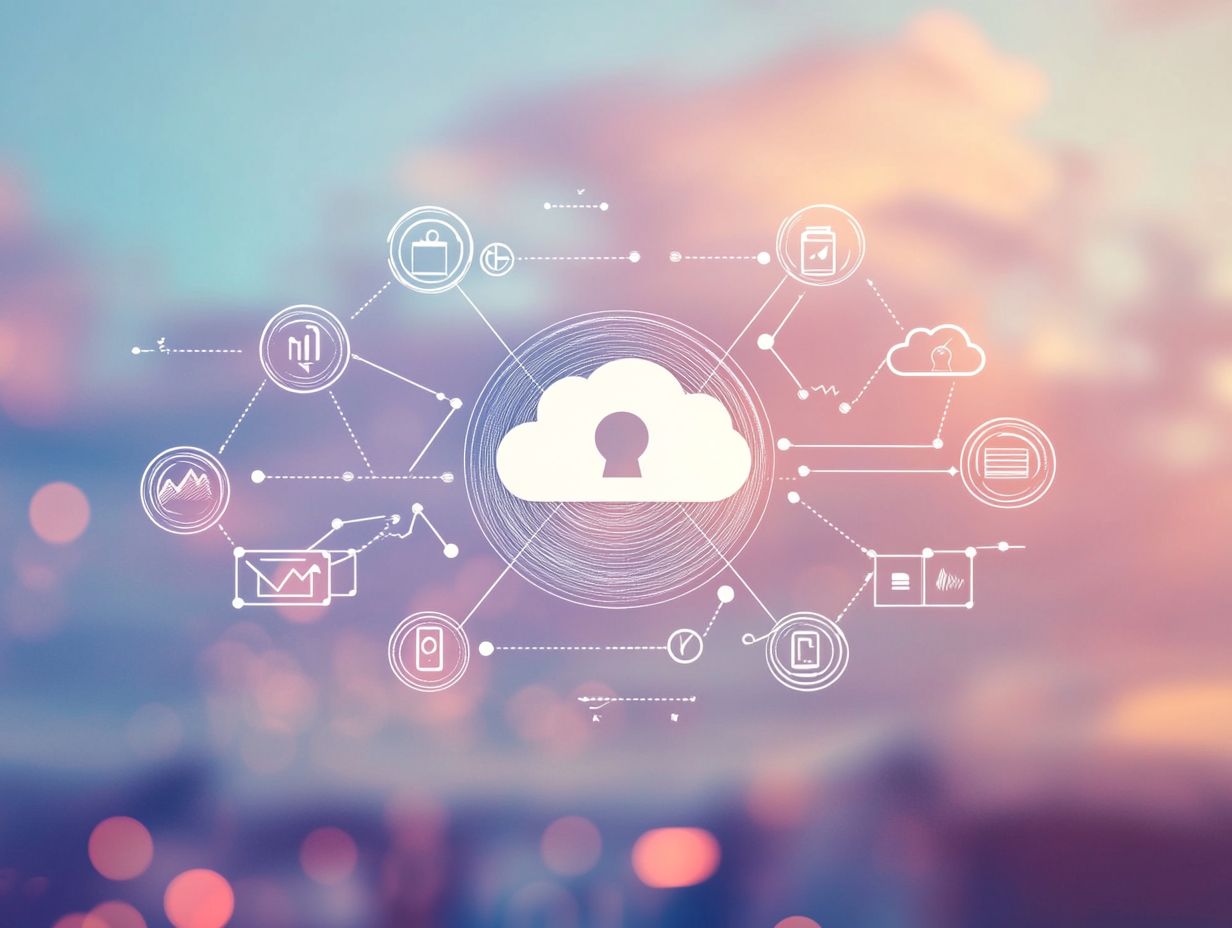
When choosing a Cloud Billing model, act quickly and consider a range of factors, including your unique business needs, usage patterns, and long-term financial strategies. Additionally, understanding the pricing structures of cloud providers can help you make an informed decision.
Analyzing how resources are utilized across your projects and understanding cost trends are crucial steps in identifying the most appropriate billing approach.
By aligning your billing models with operational requirements, you can optimize costs and significantly enhance your resource management.
Business Needs and Usage Patterns
Understanding your business needs and usage patterns is essential when selecting a Cloud Billing model that aligns with your financial objectives and resource management strategies.
When you effectively analyze your payment instruments and various billing accounts, you gain valuable insights into spending habits and resource allocation. This information is vital for tailoring a billing model that adapts to fluctuating demand and helps mitigate unexpected costs.
By monitoring how different services are utilized, you can fine-tune your strategies, ensuring you only pay for the resources you actively use. This adaptive approach supports effective cost management and creates a more strategic alignment between your technology investments and business outcomes, paving the way for future scalability and efficiency.
Comparison of Different Models
Conducting a thorough comparison of various Cloud Billing models is crucial for optimizing your cloud spending and understanding usage-based pricing in cloud to achieve effective cost management.
By diving into the features, benefits, and drawbacks of each model like Pay-as-you-go, Subscription-based, and Resource-based you can choose the approach that aligns best with your financial strategy and resource utilization.
A nuanced understanding of these billing structures will enable you to formulate a more accurate budget, allowing for efficient resource allocation.
For example, the Pay-as-you-go model offers flexibility, letting you pay only for what you actually use, which is particularly advantageous for fluctuating workloads. On the other hand, Subscription-based pricing brings predictability to your monthly costs, simplifying your budgeting efforts.
Most cloud vendors provide budgeting alerts to help you monitor expenditures in real time, minimizing the risk of cost overruns.
Effective Identity and Access Management (IAM) refers to how you control access to your resources, ensuring only authorized users can access them. IAM roles are essential for managing these billing models, as they regulate access to resources and keep track of usage patterns, ultimately guiding you toward better financial decisions.
Ready to optimize your cloud billing? Start analyzing your options today!





